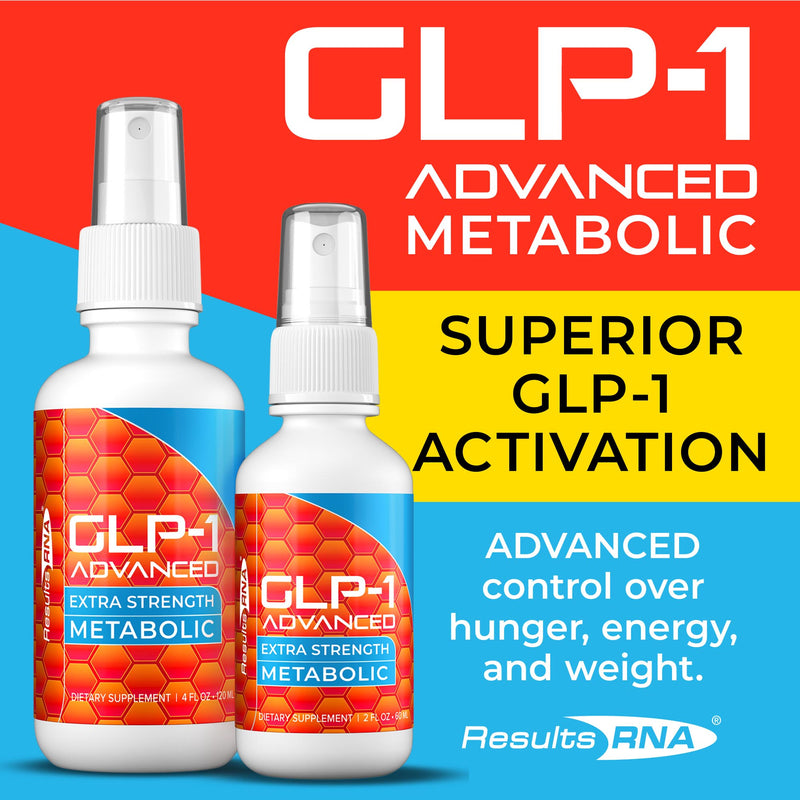Subscription Price: (10% Off)
Metabolic Health: Foundation for Energy, Vitality & Weight Management
Metabolic health refers to how effectively your body converts food into energy, regulates hormones like insulin, and balances fat storage with utilization. Good metabolic function underpins vitality, weight stability, mood, and long-term disease risk.
Many people struggle with metabolic imbalance—feeling fatigued, struggling to lose fat, or facing prediabetes. Addressing metabolism at multiple levels (diet, movement, hormonal support) can yield dramatic benefits.
One product designed to support this journey is GLP-1 Advanced Extra Strength. Below, we explore metabolic fundamentals, challenges, and how GLP-1 Advanced Extra Strength fits into a comprehensive metabolic health plan.
What Is Metabolic Health?
Metabolic health means:
-
Normal blood sugar / insulin sensitivity
-
Healthy lipid profile (cholesterol, triglycerides)
-
Balanced body fat (especially around the midsection)
-
Stable energy and appetite regulation
-
Proper hormonal balance (thyroid, adrenal, gut, etc.)
-
Minimal inflammation and oxidative stress
Disruptions in any of these domains can spill over, creating a vicious cycle of metabolic decline.
Common Metabolic Challenges
-
Insulin resistance, where cells become less responsive to insulin
-
Post-meal glucose spikes and crashes, leading to cravings
-
Fat accumulation, especially visceral fat
-
Dyslipidemia (high LDL, high triglycerides, low HDL)
-
Chronic inflammation and oxidative stress
-
Hormonal imbalances, such as cortisol, thyroid, sex hormones
-
Gut dysbiosis and poor microbiome health
-
Sedentary lifestyle, poor sleep, stress, and poor diet choices
Because metabolism is multifactorial, the most effective interventions address several components simultaneously.
The Role of GLP-1 in Metabolic Regulation
GLP-1 (glucagon-like peptide-1) is a hormone released in the gut in response to food intake. It plays key roles in:
-
Stimulating insulin secretion when glucose is high
-
Suppressing glucagon (which would otherwise raise glucose)
-
Slowing gastric emptying to moderate glucose absorption
-
Enhancing satiety and reducing overeating
By supporting the GLP-1 pathway, you influence one of the body’s built-in systems for metabolic balance.
How GLP-1 Advanced Extra Strength Supports Metabolic Health
GLP-1 Advanced Extra Strength is formulated to support GLP-1 pathways and integrate into a broader metabolic health strategy.
Balanced Glucose Response
By helping optimize GLP-1 signaling, the product aids in smoothing out postprandial (after meal) glucose spikes, which protects insulin sensitivity over time.
Appetite & Craving Regulation
Supporting GLP-1 helps control hunger signals, reduce overeating, and promote fullness—fuelling consistent nutritional adherence.
Indirect Support for Lipid & Hormonal Balance
When glucose and insulin are better managed, lipid metabolism improves (less abnormal fat storage), and downstream hormonal balance (thyroid, cortisol) finds more stability.
Supports Energy & Metabolic Rate
Stable glucose, fewer crashes, and improved insulin sensitivity contribute to more consistent energy and fewer metabolic stalls.
Complements Lifestyle Interventions
This formula is intended to be paired with nutrition, exercise, sleep, and stress management—not replace them. Together, they form a synergistic metabolic health approach.
Lifestyle Strategies to Amplify Results
To get the maximum benefit from GLP-1 Advanced Extra Strength, integrate these proven metabolic habits:
1. Balanced Nutrition
-
Prioritize protein, high-fiber vegetables, healthy fats, and minimal processed sugars
-
Use whole-food carbohydrate sources, ideally tied to activity levels
-
Consider timing (e.g. frontloading carbs earlier in the day, managing post-meal nutrition)
2. Movement & Resistance Training
-
Strength training increases muscle mass, which boosts resting metabolic rate
-
Interval or moderate cardio helps insulin sensitivity
-
Incorporate non-exercise movement (walking, NEAT) to avoid sedentary drag
3. Sleep & Stress Management
Poor sleep and chronic stress elevate cortisol, blunt insulin sensitivity, and disrupt hunger hormones—undermining metabolic efforts.
4. Gut & Microbiome Health
A balanced gut environment supports GLP-1, digestion, inflammation control, and nutrient absorption—critical for metabolic resilience.
5. Periodic Metabolic Reset
Some people benefit from intermittent fasting, carb cycling, or metabolic reset strategies (under supervision) to reignite metabolic pathways. When using carefully, these can be complementary to GLP-1 support.


















